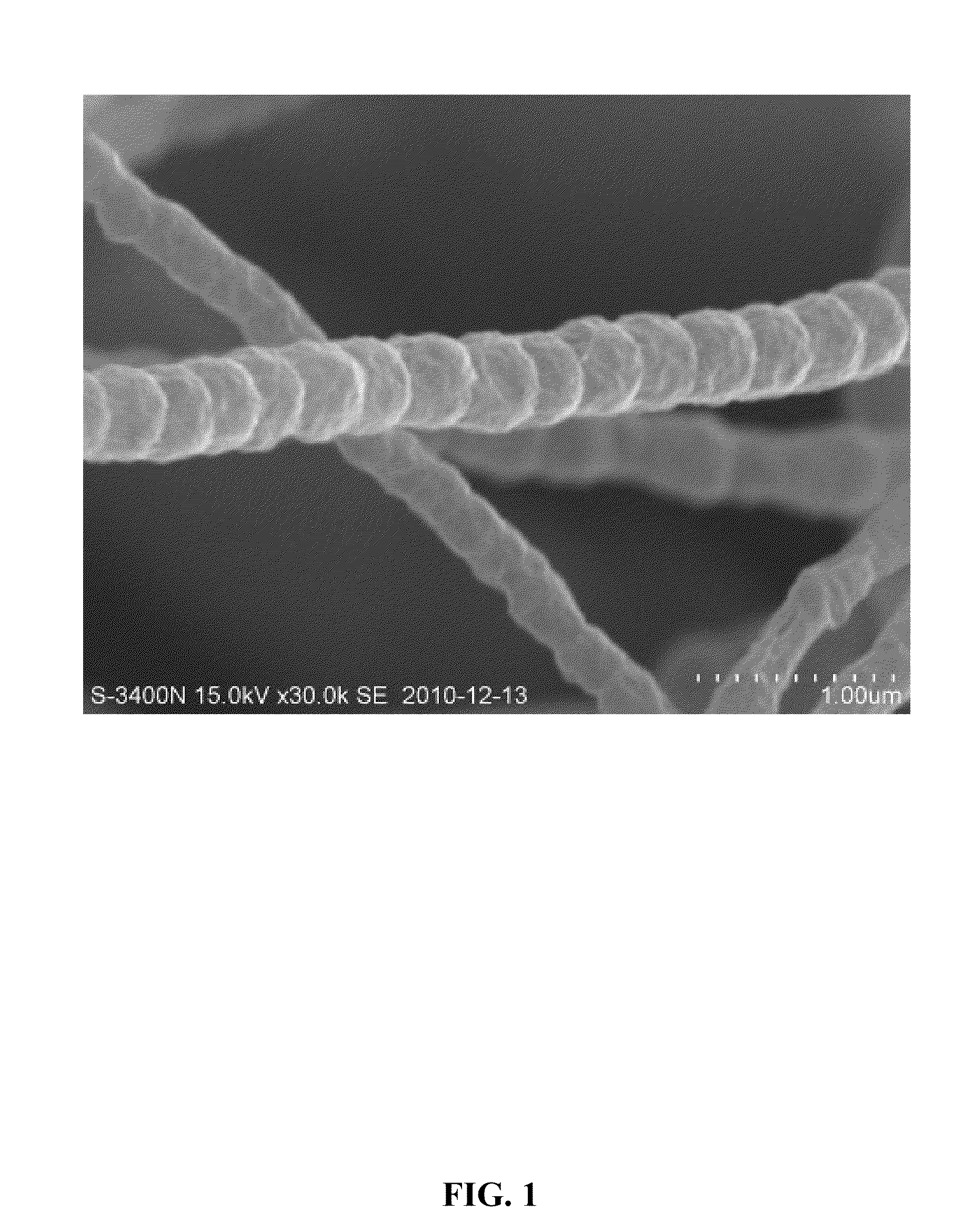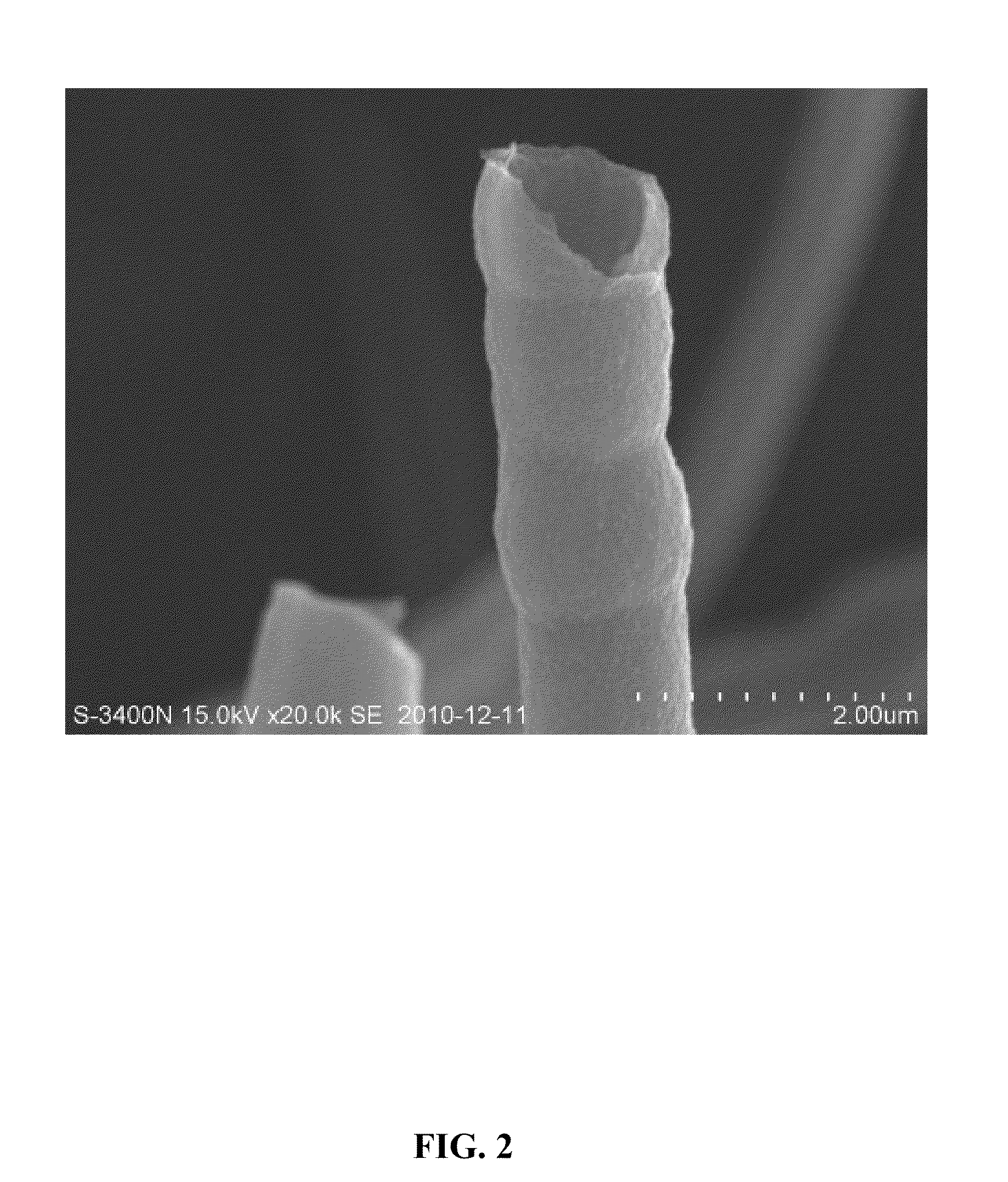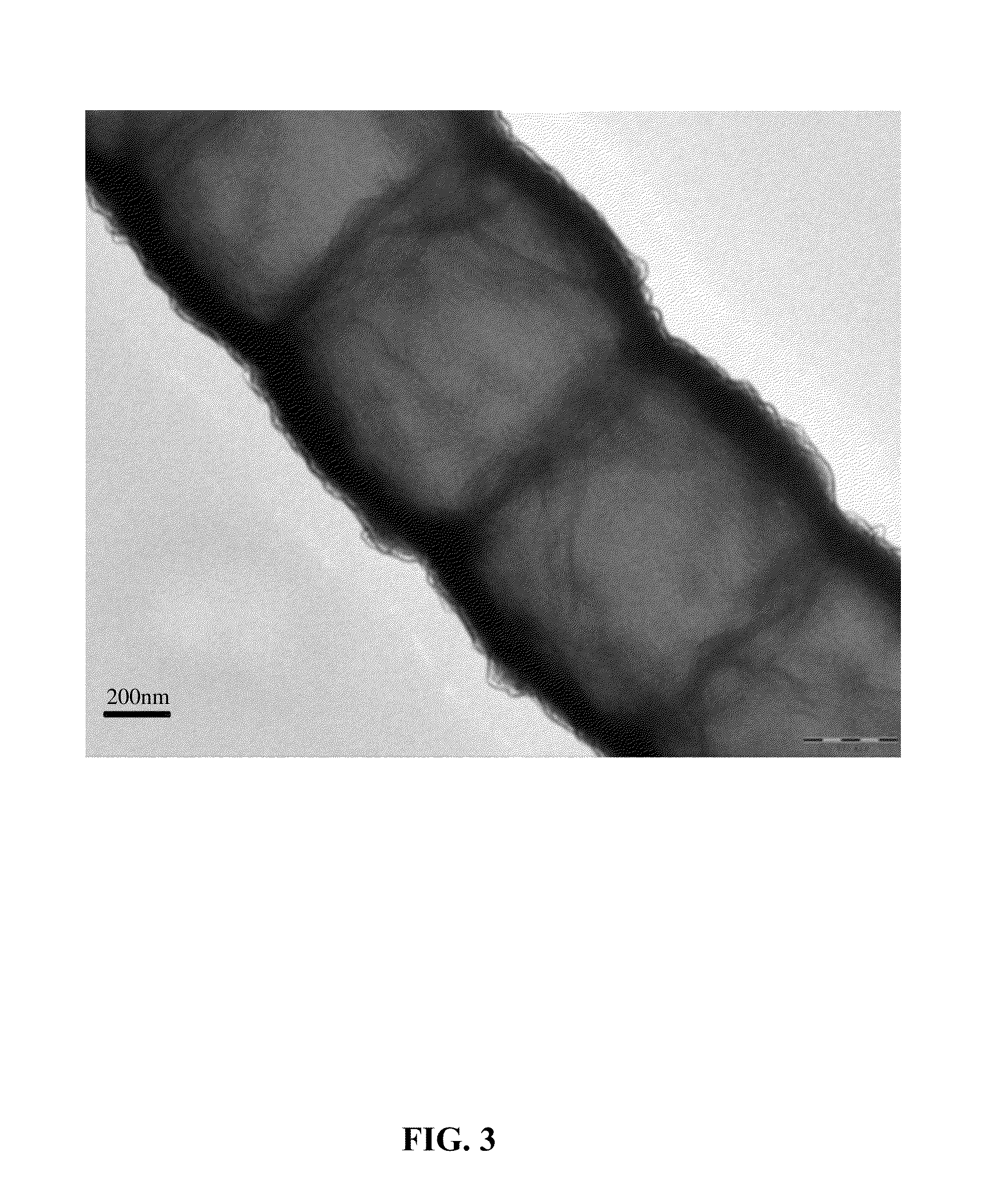Method for preparing carbon nanotube or carbon microtube
a carbon nanotube and microtube technology, applied in the field of carbon nanotube materials, can solve the problems of low yield, complex process, high cost, etc., and achieve the effect of low yield and high production cos
- Summary
- Abstract
- Description
- Claims
- Application Information
AI Technical Summary
Benefits of technology
Problems solved by technology
Method used
Image
Examples
example 1
[0066]20 g of a liquid polyacrylonitrile (LPAN) solution (having a molecular weight of 4000) was prepared and stirred for 120 h at a temperature of 120° C. to form a cyclized LPAN solution. The cyclized LPAN solution was then heated for 8 h at a temperature of between 200 and 300° C. to form an OPAN solid comprising a ladder structure. After that, the OPAN solid was ground by a planetary ball grinder. A ratio between a grinding media and the OPAN solid was controlled at 15:1, a grinding speed was controlled at 400 rad / min, and a grinding time was controlled at 8 h. Thereafter, the ground OPAN solid was discharged from the planetary ball grinder, screened, and dried at room temperature to obtain a thermal oxidative precursor.
[0067]The thermal oxidative precursor was then transferred to a combustion boat and was calcined at a temperature of 900° C. for 8 h in the presence of inert gas having a flow rate of 100 mL / min. A resulting product was cooled to room temperature, ground, and scr...
example 2
[0068]20 g of an LPAN solution (having a molecular weight of 4000) was prepared and stirred for 120 h at a temperature of 120° C. to form a cyclized LPAN solution. 0.6 g of SnO2 powder was added to the cyclized LPAN solution as a doping agent (a weight ratio between the doping agent and the LPAN was 0.03:1) to form a mixture. Thereafter, the mixture water ground by a planetary ball grinder. A ratio between a grinding media and the mixture was controlled at 15:1, a grinding speed was controlled at 500 rpm, and a grinding time was controlled at 8 h. A resulting product was discharged out of the planetary ball grinder and then heated at a temperature between 200 and 300° C. for 8 h to form a SnO2-doped OPAN solid comprising a ladder structure. After that, the OPAN solid sample was ground by the planetary ball grinder. The ratio between the grinding media and the OPAN solid sample was controlled at 15:1, the grinding speed was controlled at 400 rad / min, and the grinding time was control...
example 3
[0070]20 g of an LPAN solution (having a molecular weight of 4000) was prepared and stirred for 120 h at a temperature of 120° C. to form a cyclized LPAN solution. 0.6 g of TiO2 powder was added to the cyclized LPAN solution as a doping agent (a weight ratio between the doping agent and the LPAN was 0.03:1) to form a mixture. Thereafter, the mixture water ground by a planetary ball grinder. A ratio between a grinding media and the mixture was controlled at 15:1, a grinding speed was controlled at 500 rpm, and a grinding time was controlled at 8 h. A resulting product was discharged out of the planetary ball grinder and then heated at a temperature between 200 and 300° C. for 8 h to form a TiO2-doped OPAN solid comprising a ladder structure. After that, the OPAN solid sample was ground by the planetary ball grinder. The ratio between the grinding media and the OPAN solid sample was controlled at 15:1, the grinding speed was controlled at 400 rad / min, and the grinding time was control...
PUM
| Property | Measurement | Unit |
|---|---|---|
| flow rate | aaaaa | aaaaa |
| flow rate | aaaaa | aaaaa |
| temperature | aaaaa | aaaaa |
Abstract
Description
Claims
Application Information
 Login to View More
Login to View More - R&D
- Intellectual Property
- Life Sciences
- Materials
- Tech Scout
- Unparalleled Data Quality
- Higher Quality Content
- 60% Fewer Hallucinations
Browse by: Latest US Patents, China's latest patents, Technical Efficacy Thesaurus, Application Domain, Technology Topic, Popular Technical Reports.
© 2025 PatSnap. All rights reserved.Legal|Privacy policy|Modern Slavery Act Transparency Statement|Sitemap|About US| Contact US: help@patsnap.com



